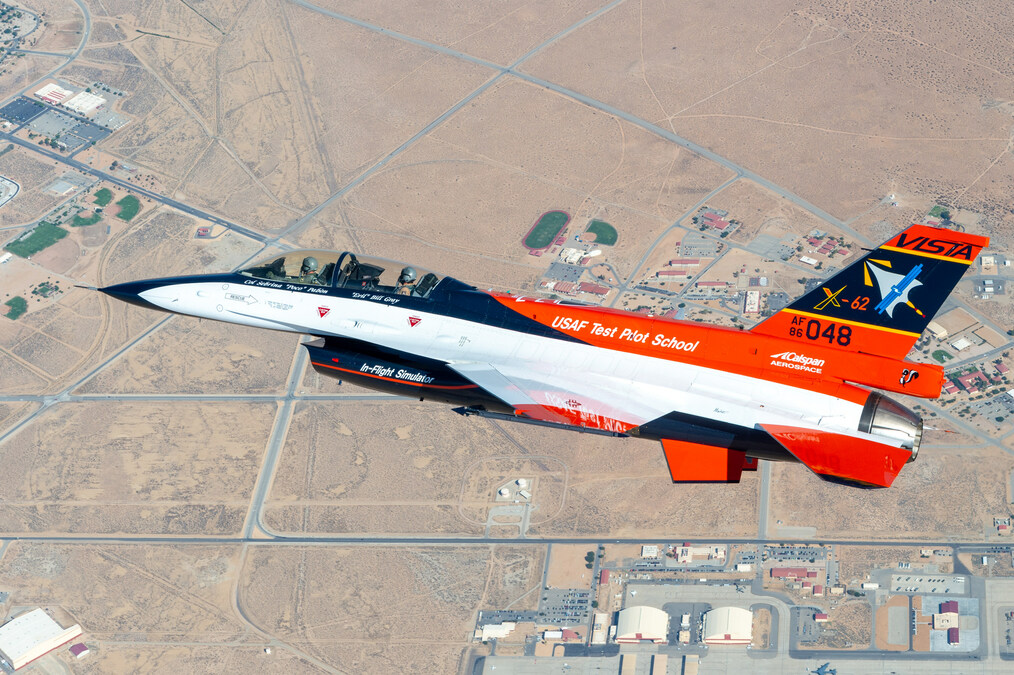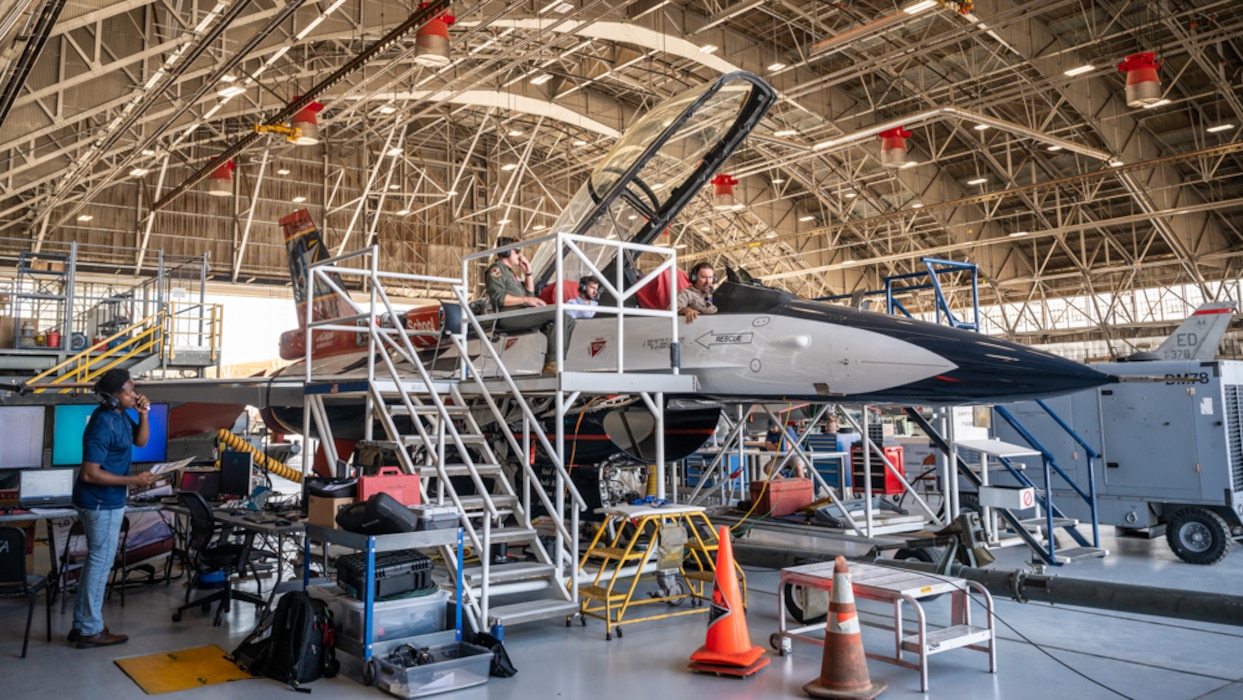US Department of Defense’s research agency, DARPA, announced on February 13 that a modified F-16 fighter jet had completed an Artificial Intelligence-controlled test flight for the first time in history.
The F-16 fighter jet, which was inducted into the US Air Force (USAF) decades ago in 1978, has now developed into autonomous aircraft that can be commanded and piloted by AI systems. This is aligned with DARPA’s Air Combat Evolution (ACE) program to enhance human-machine collaboration in combat.
A press release published by DARPA read, “In less than three years, artificial intelligence (AI) algorithms developed under DARPA’s Air Combat Evolution (ACE) program have progressed from controlling simulated F-16s flying aerial dogfights on computer screens to controlling an actual F-16 in flight.”
The F-16 was modified and upgraded to an all-new configuration that came to be known as the X-62A Variable In-flight Simulation Test Aircraft or VISTA. It was reportedly flown by an artificial intelligence agent for more than 17 hours recently, representing the first time AI engaged on a tactical aircraft.
“In early December 2022, ACE algorithm developers uploaded their AI software into a specially modified F-16 test aircraft known as the X-62A or VISTA (Variable In-flight Simulator Test Aircraft) at the Air Force Test Pilot School (TPS) at Edwards Air Force Base California, and flew multiple flights over several days,” according to a press release by DARPA.

The release elaborated by saying, “The flights demonstrated that AI agents can control a full-scale fighter jet and provided invaluable live-flight data.”
A unique training aircraft VISTA was created by Lockheed Martin Skunk Works in association with Calspan Corporation. It is equipped with software that enables it to replicate the performance characteristics of other aircraft, including flight control capabilities. It was built on an open systems design.
The autonomous test flight is a breakthrough for DARPA’s ACE program, which started taking shape in 2019 and was based on the concept of man-machine cooperation in dog fighting. The Pentagon is integrating AI into more than 600 projects, including ACE, to bolster the nation’s defense capabilities.
Media reports have suggested that the X-62A VISTA will also fly autonomous flights supporting the ambitious Skyborg Program. This initiative has guided the transition to open, modular autonomy to enable combat mass using inexpensive unmanned aircraft.
VISTA’s autonomous flight is expected to cause a tectonic shift in combat in the future as several countries, including China and Russia, are developing AI-driven military platforms.
Further, even the United States is developing the Next Generation Air Dominance (NGAD) system that will invariably focus on manned-unmanned teaming.
The Era Of Autonomous Flight & The X-62A VISTA
The X-62A VISTA is a bespoke version of the F-16D fighter jet that has been operating since the 1990s and has recently undergone upgrades to serve as a testbed for various autonomy software cores.
In December 2022, an Air Force pilot turned over control of this unique, heavily modified F-16 to an AI system while flying over the Mojave Desert. Less than two hours later, the aircraft returned to the sky again to conduct a second flying test of an entirely new AI.
The Air Force unlocked a new capability with those first two flights that allowed the service to quickly conduct flight tests of autonomy software regardless of which organization or company developed it, make quick algorithmic improvements based on the results of that testing, and then reload the AI and fly again within a matter of hours. Such is the X-62A’s power.
There are two seats in the X-62. Only three people are now qualified to fly VISTA, but the highly competent F-16 instructor pilot in the back has undergone special training. This pilot can turn off all simulation or autonomous systems at any time while in flight, returning the F-16 to standard flying controls.
Although the front seat of the X-62 can be occupied by anyone who can pass a flight physical examination and does not require any additional flight training, it is typically occupied by a flight engineer who manages the simulation systems or, more recently, by someone in charge of the aircraft’s autonomous operations.

Two systems have been updated for the X-62A. The first is the VISTA simulation system, which allows the aircraft to mimic the flight characteristics of another plane. The other is the autonomous simulation control system, which enables several autonomous behaviors to fly the plane.
The DARPA believes that the VISTA would not be expected to take off without a pilot. The AI will fly the jet and offer real-time flight data, ensuring that the “human pilot focuses on larger battle management tasks in the cockpit.” The focus, thus, is still on creating more harmony between human pilots and AI instead of outsourcing combat flight entirely to machines.
The autonomous flight test comes when AI is becoming more enmeshed in military technology. It has long been asserted by the Pentagon and DARPA that AI will significantly bolster combat, especially for the collaborative combat aircraft, which is envisioned to work through and triumph in contested airspaces and near-peer conflicts.
- Contact the author at sakshi.tiwari9555 (at) gmail.com
- Follow EurAsian Times on Google News




